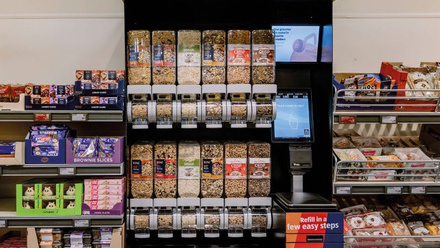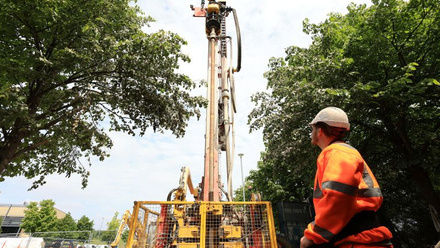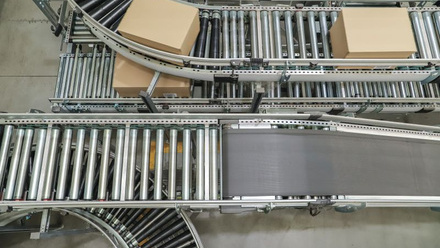Extending a hand
Navigating the current packaging legislative landscape

As the clock hit midnight and the fireworks lit up the sky on New Years Eve, welcoming in 2025, the legislation for Extended Producer Responsibility for Packaging (pEPR) came into force.
Perhaps the arrival of pEPR wasn’t all fireworks and celebrations, but after writing about its consultation and development, since I took on the role of Chair of the IOM3 Packaging Group five-years ago, it feels good to finally be at implementation phase.
For those of you who may have missed the consultation phases, let me take you on a whistle-stop tour of the current packaging legislative landscape and how it will affect all of us as citizens.
The pEPR legislation is one of a group of legislative reforms that aims to boost the UK’s sustainable credentials around packaging. The other two are the Deposit Return Scheme (DRS), which applies to single-use drinks containers, and Simpler Recycling, meaning all local authorities in England will collect the same things for recycling – the rest of the UK has or will have similar legislation.
As waste is a devolved responsibility, the pEPR legislation needs to work across all four nations and a Scheme Administrator, PackUK, has been designed to do this.
The EU is also introducing the Packaging and Packaging Waste Regulation (PPWR).
Levelling the landscape
The principle of pEPR is that the producer pays for the management of the packaging material that they put on the market, all the way through the waste management system.
Essentially, it shifts the burden of paying for packaging to be disposed of, or recycled, from the taxpayer to the company that produces it.
By making the producers responsible, pEPR aims to incentivise companies to reduce their material footprint and use more sustainable packaging. The intention behind this is to drive up recycling rates and to increase recyclate quality. The material would then have more value and so increase its end market, as well as the financial incentive.
The introduction of pEPR means that we have now started, sometimes for the first time, to really scrutinise packaging of products to understand recyclability.
It’s important to remember why we we’re doing all of this – pEPR compliance isn’t just about avoiding penalties, it’s about demonstrating a commitment to sustainable practices and doing the right thing. The importance of legislation means that it’s across the board, so everyone faces the same challenges.
Report card
Building an accurate picture of the amount of packaging material placed onto the UK market is an essential part of the measurement and analysis of the effectiveness of pEPR.
Reported data on packaging material and format feeds into the fee mechanism, but it also provides valuable insight into the volume and composition of packaging materials.
Obligated producers under the pEPR legislation are categorised as large or small.
Large producers are businesses who put more than 50t of packaging onto the UK market in a calendar year and have a turnover of over £2mln.
Small producers are businesses who put between 25-50t of packaging onto the UK market in a calendar year and have a turnover of between £1-2mln.
Large producers are required to submit data every six months and they will pay fees based on the data they submit.
Small producers are required to submit data annually and pay a registration fee as a producer, but will not pay fees based on the data they submit. This allows information on the amount of packaging material in the market to be as accurate as possible without becoming too onerous for small businesses.
Packaging data for material placed on the market in 2024 was due to be submitted by 1 April 2025.
The data reporting is undoubtably a challenge for businesses, but it is vital for an efficient, effective and, above all, fair system.
The next step is to include a recyclability assessment and include the output of that assessment in all future data submissions.
A Recyclability Assessment Methodology (RAM) for pEPR has been developed by PackUK and was published in April 2025. This provides a standard guide on the recyclability of different packaging materials and formats, and categorises them as red, green or amber for recyclability.
The RAM covers the packaging classification and application, but it focuses on the collection, sorting and reprocessing of materials.
Paying dues
The first fees will be based on the packaging data that has been submitted and the overall cost of the collection, sorting and reprocessing of all the material.
Eco-modulated fees are planned for 2026. Under this element of pEPR, non-recyclable packaging will be charged at a higher rate – there will be a direct financial incentive to either reduce the volume of packaging, or to opt for easily recyclable materials. The RAM is the key pillar to help businesses prepare.
This will hopefully incentivise design for recycling and, combined with Simpler Recycling, will lead to a more circular packaging footprint.
Will it make a difference?
All of this is a huge change to the current situation. It reinforces the fact that packaging is deceptively complicated and in many ways under appreciated.
I am, however, hugely optimistic that pEPR is a positive force for good in the packaging industry. It presents an opportunity to boost transparency and to engage consumers.
While you as the citizen would have been paying for waste management through your taxes with no control over the costs or incentive to make a difference, now you can make a difference through the choices you make in the products you buy and how effectively you are able to recycle that used packaging. It is important to stress the citizen’s role in the success of pEPR.
The packaging manufacturers have a responsibility to produce more recyclable formats, and brands and retailers must specify for recyclability to be designed into the packaging they use.
Local authorities have a responsibility to manage efficient and effective collections. Sorting and reprocessing contracts and processes need to be designed to maximise the value of the materials.
The citizen sits in between the packaging industry and the waste management sector, and in the split second they have that empty piece of packaging in their hand, they need to know exactly which container to put it in so it can start off on the right journey.
Once we know what we are dealing with and whether a material is recyclable or not, we can provide standardised, clear instructions that allow the consumer to play their part. Coupled with efficient collection, sorting and accompanying infrastructure, we can make a real difference and start to achieve the ambitious goals of pEPR.
If the overall goal is to reduce the impact of packaging on the environment by reducing the volume of resources needed and making sure that our packaging products can have a second life through recycling, then bringing citizens on board is vital.
Packaging is the gateway to consumer understanding of the value of resources, so with the right messaging in place, the entire value chain can really make a difference.
Following the pack
We are in the most exciting time right now. Simpler Recycling, pEPR and DRS are hugely important and significant regulations. They are not perfect, but they are a good start.
Implementing them well and evolving them to respond to innovations in materials and packaging formats, as well as system-thinking around collection, sorting and recycling infrastructure and processes, is going to be a huge factor in achieving circular economy goals in packaging.
We also need to look ahead to alternative solutions for how we interact with packaging. The industry is already developing alternatives such as reuse and refill systems that work on a commercial scale. It is this type of innovative thinking that will drive sustainability within businesses and a behavioural change among consumers.
Recycling is absolutely not the answer, but it is a really important start.









